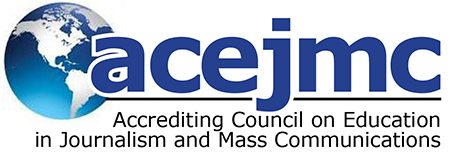Diversifying faculty, students and curriculum is not rocket science, as you’ll see in these simple ideas. It’s easy to diversify, especially if the message from the dean, director or chair is unambiguous. These ideas might help—but only after the top person has sent the message.
–Jerry Ceppos, dean, Manship School of Mass Communication, LSU (2017)
Diversifying the faculty
1. Require that the pool for every position includes a finalist who is a person of color. How to do that? If the finalist pool isn’t diverse, tell the committee to bring in one more candidate—the person of color who ranked highest on the list.
2. Tell the provost that you have located a person of color who would be ideal for your faculty—but you don’t have a vacant line. You might be surprised at his or her reaction. On one recent accreditation site-team visit, the dean said no such incentives were available. The team challenged the provost, who said that he would be happy to consider adding a line for a diverse candidate and in fact had just done so for another department.
3. Ask your search committees to target people of color based on Google searches of comparable departments at other universities or simply talking to colleagues at other universities. You and your faculty are resources, too.
4. Consider a hiring strategy that spells out what diversity really is. Set goals that are challenging but realistic—and then remember that diversity isn’t something that gets “done,” achieved” or “accomplished” once you hit a precise number.
5. Consider assigning a diversity advocate to each search committee. It is the advocate’s job to make sure that diversity is a significant part of the conversation.
6. If you’re in leadership, talk up the importance of diversity constantly. One telling argument: Despite what people think, your faculty isn’t really qualified if you have significant numbers of students who are women but have a male-dominated faculty. The same is true for students of color.
7. Watch out for gender, ethnic and racial equity in pay, rank, leadership positions and membership on committees, especially search committees.
8. While you’re working on long-term diversification of the full-time faculty, remember that adjuncts can more easily solve some of your immediate diversity issues–but adjuncts are not by themselves a long-term solution.
9. Consider smart partnerships with HBCUs in your region to create faculty exchange programs and opportunities for students to work on joint projects.
10. Consider a diversity committee with faculty and students that can set long-term goals and monitor results.
Diversifying the student body
1. Assign responsibilities for recruiting at specific largely minority high schools; don’t let such recruiting happen by chance. If possible, count those activities as service so that you’re not adding yet another burden that goes unrecognized.
2. Create or beef up summer high-school press camps, awards for outstanding high-school work and an organization for high-school advisers.
3. Invite predominantly minority high-school students to tour your facilities and sit in on classes.
4. If you have a graduate program, consider buying a recruiting booth at—or just attending—conventions of the minority journalism organizations.
5. Create student chapters of those organizations at your school.
6. Mentor some minority students yourself.
Diversifying the curriculum
1. Consider a required stand-alone course about diversity in mass communication and journalism.
2. If you prefer simply to incorporate diversity in an array of courses, be sure that really happens. Site teams often have seen a lack of diversity issues on syllabi even if the unit says it teaches diversity in most courses. Focus on assignments with concrete outcomes, not a single classroom discussion.
3. Ask faculty members each year to describe teaching, scholarly or service activities that focus on a diversity issue or help increase the opportunities for students to be exposed to diversity and multicultural awareness.
A final thought: We all serve on enough committees, but consider a diversity committee of faculty, staff and students to set long-term goals and monitor progress.
In addition to seeing diversity—and inclusivity–reflected in faculty, students and curriculum, site teams look for “a climate that is free of harassment and all forms of discrimination.” Adopting the suggestions above is very likely to improve the odds of such a climate. However, if you detect issues of bias or questionable judgments about diversity, act quickly and decisively—and let everyone know that you have.
With thanks to Chris Callahan of Arizona State University, Marie Hardin of Penn State University, Michael Bugeja of Iowa State University, Judy Oskam of Texas State University and many others.
